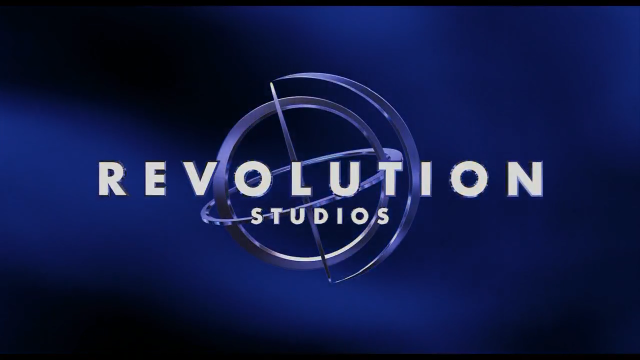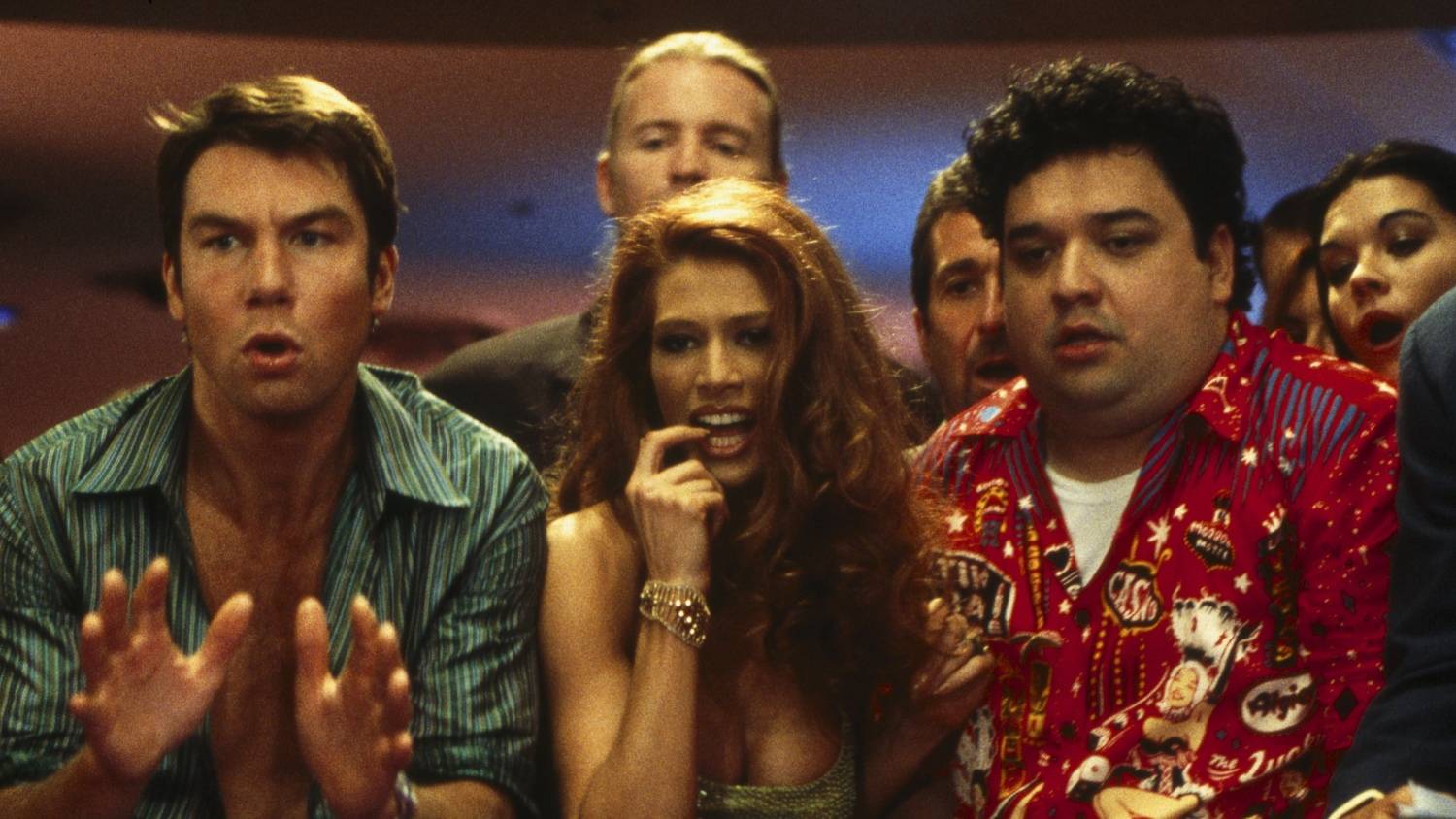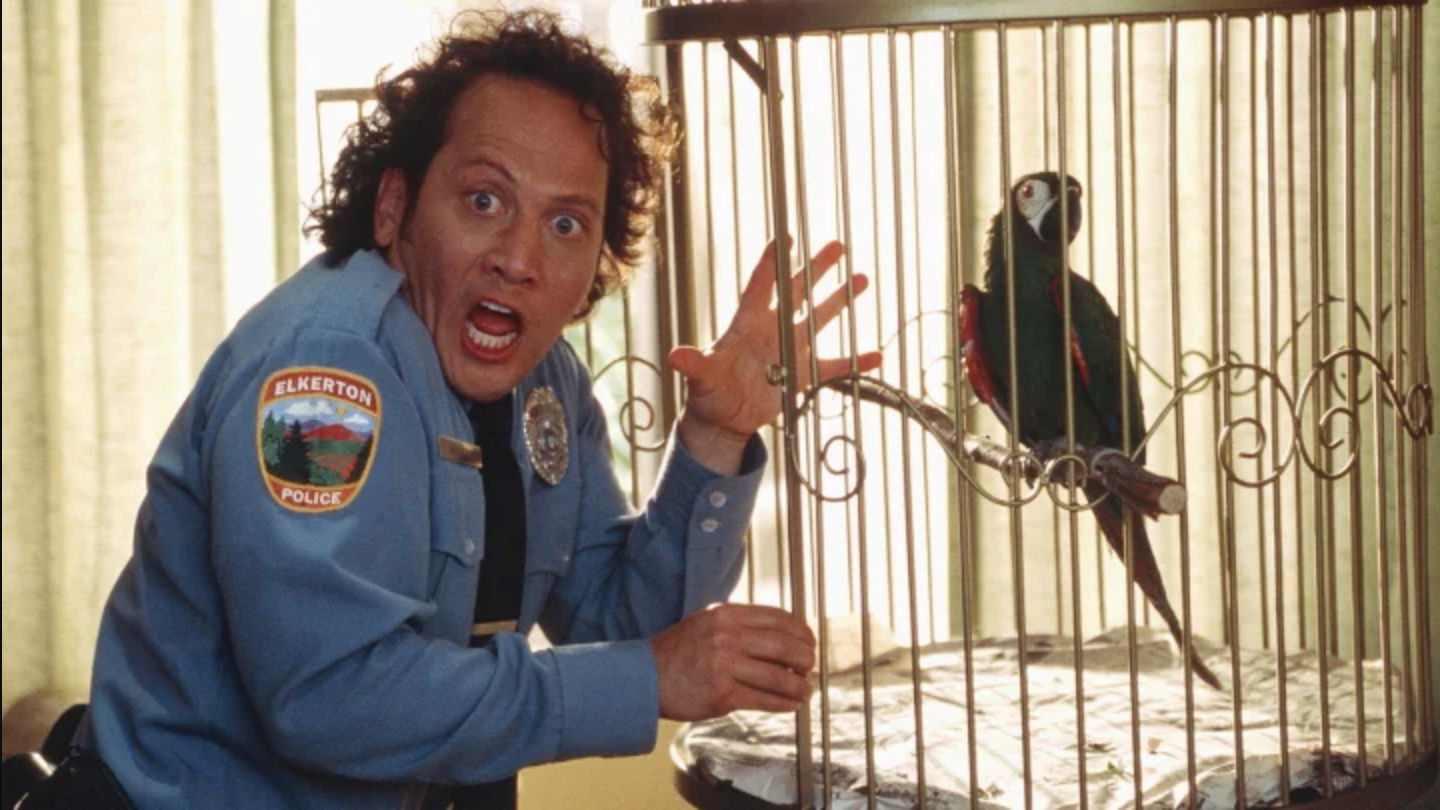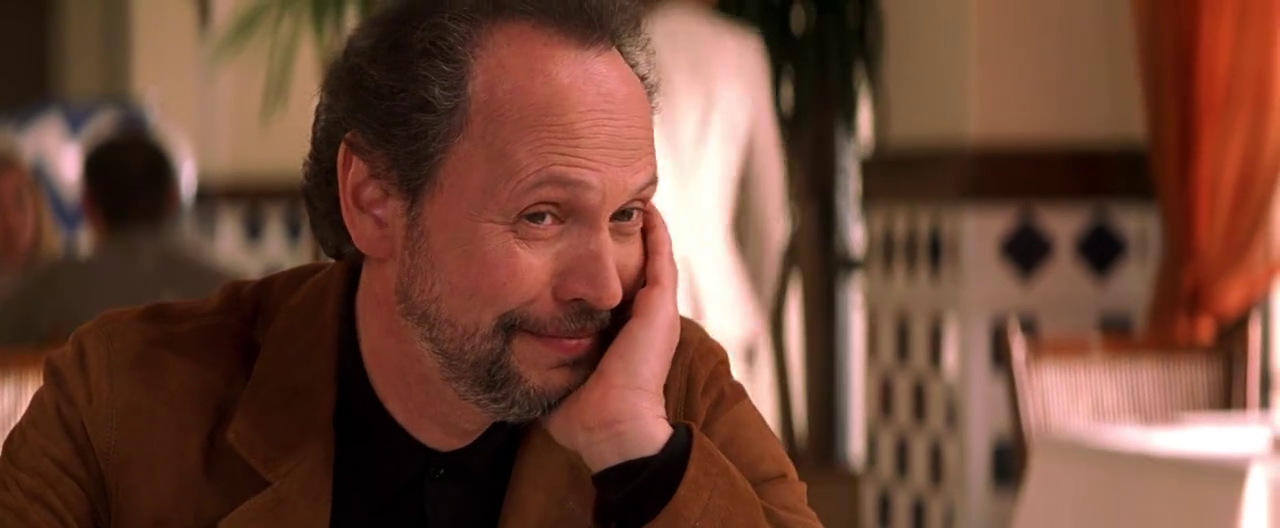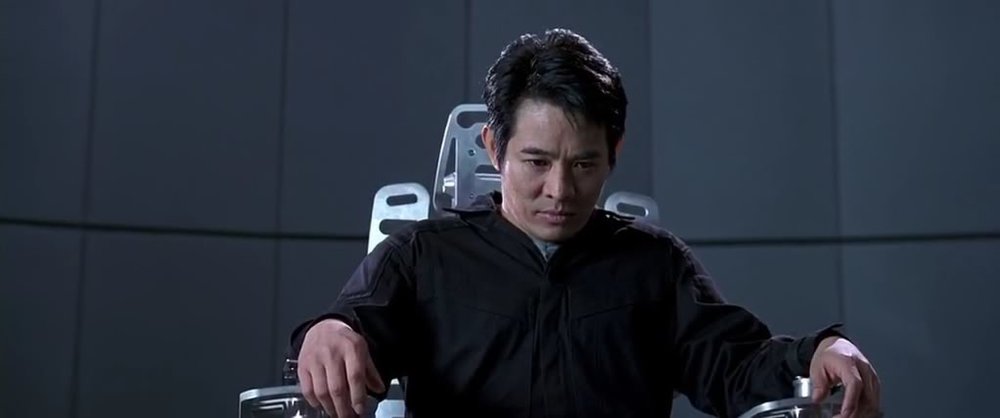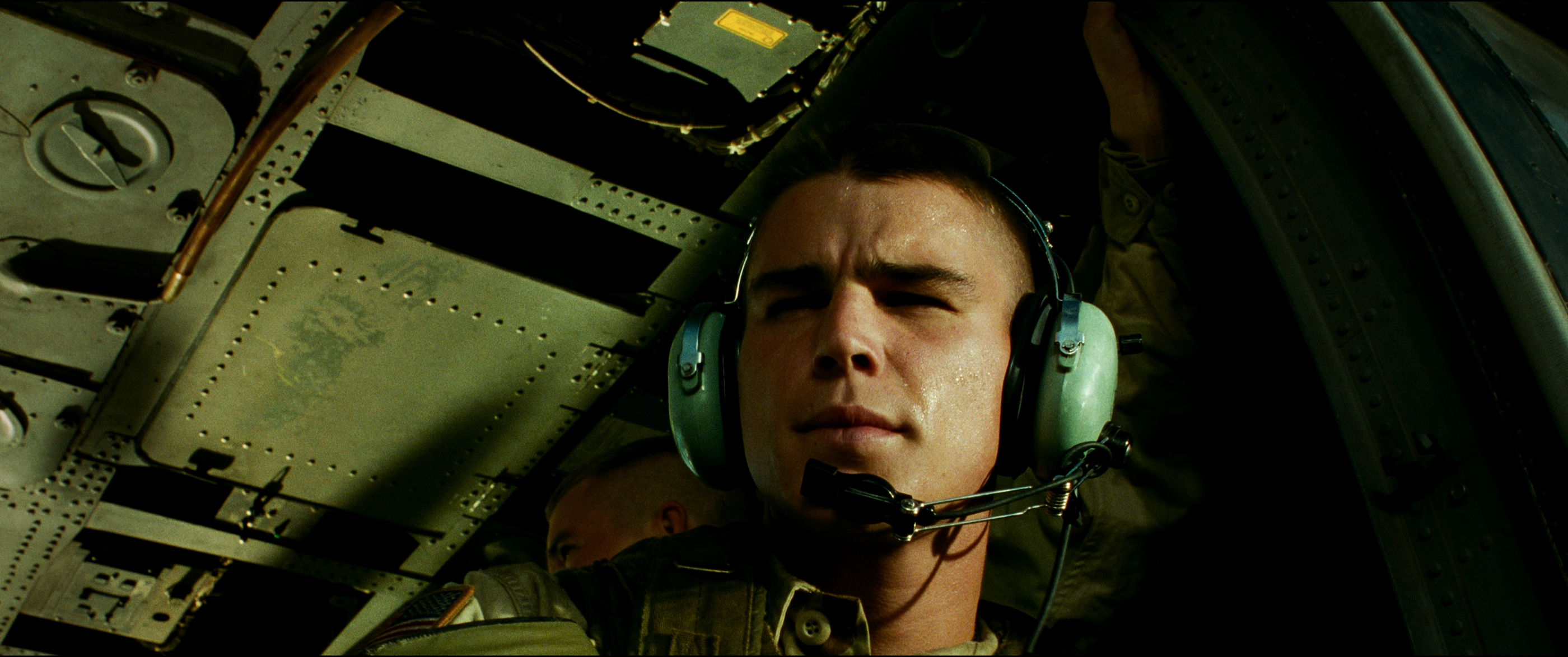The Introduction
The year is 1994. Michael Eisner has pushed Jeffrey Katzenberg out of his position as Disney studio head, a move that will result in, among other things, a $250 million lawsuit and Shrek. In Katzenberg’s place, Eisner hired Joe Roth, a producer and sometimes director who was previously chairman of 20th Century Fox. Roth stayed at Disney until 2000, and during this time he spearheaded some of the biggest hits of the 90s (The Sixth Sense and Armageddon being the most impressive feathers in his cap) and worked with some of the greatest directors of the 90s; David Lynch, Jonathan Demme, Spike Lee, Martin Scorsese, Wes Anderson, Michael Mann, and Paul Verhoeven all made Disney movies at the time. The problem was that those auteur movies kept being massive bombs, often for exorbitant costs; we all love The Insider, but maybe a $90 million budget was a bit much, to say nothing of the $80 million dropped on Demme’s aggressively unpleasant Beloved. That string of auteur bombs made Roth one of the many people to get on Michael Eisner’s bad side, and so Roth fled Disney and decided to create his own film studio, Revolution Studios (after the Beatles song). As a mea culpa for the reckless spending Roth oversaw at Disney, Revolution aimed to cut out the bloat that was affecting the major studios at the time, namely overhead costs and big-budget behemoths that limit the number of projects a studio can make in a year; they’d make more movies for smaller budgets and with fewer luxury costs than the majors. As one of the studios suffering from too many oversized projects and too few projects to fill out a year, Sony agreed to distribute, advertise, and provide 50% of the budgets of Revolution’s films. This way, Sony had a proposed six-to-eight schedule-fillers a year, with lower costs and lower risk. Plus, Roth’s chummy relationships with talent from both Fox and Disney got Revolution three-picture deals with three of Hollywood’s biggest stars: Adam Sandler, Bruce Willis, and Julia Roberts. Sony and Revolution were looking at some surefire hits in the pipeline.
Of course, in Hollywood, nothing is surefire until it actually fires. The legacy of Revolution ended up being defined not by its handful of hits but by its larger pile of low-risk, low-reward mediocrity. Not like the artistic work Roth fought for at Disney, these movies were clearly calculated with commercial appeal in mind and that appeal never materialized. By the end of 2007, when their distribution contract with Sony expired, Revolution had actually gone broke underestimating the intelligence of the American public. How did they misread their audience so badly? That question and others I hope to answer during the course of this series, where I’ll be looking at all 47 of Revolution’s films by year. This year, we start by scraping the bottom of the barrel and slowly work our way back up to the top of the barrel.
The Films
The original sin of Revolution Studios is Tomcats ($23.4 million, $11 million budget). Bad first impressions can be hard to make up, and the world’s introduction to Revolution being an obvious cash-in on the post-American Pie wave of grossout sex comedies didn’t paint the best picture of the quality or careful selection of Revolution’s projects. At the time of its release, Joe Roth told The LA Times that Tomcats (the directorial debut of studio-hack screenwriter Gregory Poirier, who four years earlier had somehow written John Singleton’s incendiary Rosewood) came first simply because it was done first, its small size meaning it was in the can and ready for release before the bigger productions in Revolution’s initial slate. If Revolution’s M.O. was to show the value of lower-cost projects, starting with a potential little-movie-that-could makes sense. And the earlier release meant that Sony could put it out during spring break, when the desired market of 18-24-year-old males would be wide open. It all makes sense in the abstract, and if it had hit, it would be seen as a smart strategy. But it didn’t hit, because it’s a rancid piece of shit that even spring breakers wanted nothing to do with, so it’s just an immediate black eye on Revolution. The next year, Roth went to The New York Times with an apology for Tomcats, saying that it “was us just trying to be opportunistic.” Revolution produced enough bad movies after Tomcats that one would think they required public apologies too, but even in a catalog this bad, Tomcats stands tall in its awfulness.
My first and only laugh at Tomcats came just under 20 minutes in. Jerry O’Connell has blown $51,000 at a casino and Bill Maher is the casino boss trying to shake him down for the money. O’Connell doesn’t have the money because, as he explains it, his only income is from doing the background color on the Sunday edition of Garfield. Maher, without missing a beat, tells him “I love your work.” A solid joke by any metric, but looked at objectively, it takes a goddamn Bill Maher appearance for this movie to come to life. It turns out Maher’s brand of radioactive smugness actually comes as a relief after spending so much time with Jerry O’Connell, whose performance here is repulsive. There’s not a moment or joke here he doesn’t overplay far past the point of it resembling human behavior (a scene where he reacts to mundane pregnancy stories with horror-movie terror is so over-the-top it doesn’t even make sense in this movie’s dumbass cartoon universe), what’s visible on-screen isn’t his character but his own desperate need to be loved by an audience. The ticking-clock of the movie is Maher threatening to kill him unless he pays up, and I spend the whole movie hoping Maher succeeds. That this was not a career-destroying performance for O’Connell is likely because everybody else in the movie is also very bad, even people who can be funny like Horatio Sanz and Jaime Pressly (all they get is a mind-boggling subplot where Sanz is paranoid that Pressly is a lesbian). Shannon Elizabeth is a plank of wood as the female lead, while Jake Busey, already a strange presence even in his best work, has clearly not been reined in at all. I’m left with the conclusion that Bill Maher gives by far the funniest and best performance in this movie, and I wish it wasn’t true.
How funny do you find the idea of old people and sex? Not even necessarily them having sex (though that too), them overhearing people talking about sex and giving disapproving looks. If you find that the funniest thing imaginable, Tomcats is the movie for you. If not, you might want to look elsewhere because that’s the best comedic idea Tomcats is bringing to the table. Otherwise, it’s just rank misogyny and homophobia and exhausting shock gags, like an extended plot cul-de-sac where Jake Busey gets testicular cancer that ends with the punchline of David Ogden Stiers eating Busey’s severed testicle. It’s effectively gross, but not even a little funny; the rest of the movie doesn’t even accomplish the first part. It also looks and feels cheap, with choppy editing rhythms and several semi-promising jokes ruined due to inept direction (this is Poirier’s sole directing credit, it’s easy to see why). Surely a company aiming as high as Revolution (just look at the name!) would want to introduce themselves with a movie that even reached bare technical competency?
When you watch a comedy as irredeemable as Tomcats, you develop a greater appreciation for the pleasures of even a mediocre comedy. Placed next to each other, Tomcats and The Animal ($85.2 million, $47 million budget) sure make it seem like Revolution’s mission statement is to provide the worst swill imaginable to whoever will bite. But the difference between Tomcats and The Animal is as vast as the difference between The Animal and Uncut Gems. One only wants to shock and offend you despite not possessing the intelligence to do either of those things right, the other just wants to make you laugh with silly slapstick and more or less fulfills that goal. It’s drinking out of the toilet versus eating at Burger King.
I don’t wish to oversell The Animal‘s merits, it’s a 5/10 and not up to the standards of the superior Sandler-starring Happy Madisons of the time period (or even the standards of 2001’s other Sandler-alum vehicle Joe Dirt). But I was promised Rob Schneider having disastrous encounters with animals, that’s what I was given, and goshdarnit, it can be pretty funny sometimes. Happy Madison movies have their own problems with cruel jokes, but generally, as they are here, they’re a brief interruption in a comedic tone that more favors the ridiculous than the offensive. Tomcats doesn’t have anywhere near as sublime a non-sequitur as the random news reporter character in this who is revealed to be hiding his car keys in his ass.
Schneider is an inherently unappealing screen presence as a lead, he seems to be expending too much effort just trying to come off as an average guy. So it’s a good workaround that this movie has him play a character who spends most of the movie behaving bizarrely, it gives his manic energy an outlet that isn’t just trying to make you like him. He can be funny when getting into a fistfight with an orangutan or flapping around a pond like a trained dolphin, thankfully the movie isn’t asking him to do much more than that kind of animal-centric slapstick. What little more he is asked to do is DOA, particularly a lame romance between him and environmental activist Rianna, played by first-season Survivor contestant Colleen Haskell (did I tell you the year was 2001?). She’s not very good in the part, but of course she isn’t, she’s a reality-show contestant playing the female lead in a Rob Schneider movie. Much better is John C. McGinley, who gives good asshole as Schneider’s steroidal boss; he’s not Shooter McGavin, but he comes closer than you might expect from a B-tier Happy Madison project. And you’ve got a few Happy Madison lifers providing color in the margins, like Sandler himself as a riff on Schneider’s “you can do it!” guy and Norm MacDonald as a hopelessly confused member of an angry mob.
It took Roth resuming his dormant directorial career to get there, but finally, on the third try, Revolution delivers a comedy for adults and not teenage boys. While America’s Sweethearts ($138.3 million, $64.4 million budget)’s conception of “for adults” does still make room for a comic setpiece where a misleading surveillance-camera angle makes it seem like John Cusack got caught masturbating in public, one can’t deny that a movie where all the plot is centered around a press junket is not aiming for high-schoolers. This is a rom-com as only a studio executive could direct and only a showbiz-lifer like Billy Crystal could write, a simple-enough premise (a studio wants a big celebrity couple back together to promote their movie) bogged down by “only in Hollywood!” back-patting. Sometimes the inside-baseball stuff is amusing, like a potshot at the smiley idiots who do local-news film segments, but mostly it’s both too specific for general audiences to laugh at and too dumbed-down for anyone hoping for a biting Hollywood satire. It’s one more distraction for a movie that already suffers from too much business. Some movies can withstand the weight of Hank Azaria doing a questionable ethnic caricature, but this one doesn’t need Azaria with a ludicrously thick Spanish accent as Catherine Zeta-Jones’s new boyfriend, especially when it already has two scenes of Alan Arkin seeming to do an Indian accent as John Cusack’s bogus spiritual healer. It also doesn’t need the bit about Julia Roberts losing 60 pounds that’s there only for flashbacks where she dons a fat suit (maybe worse for it being a relatively tasteful fat suit) or any of the bits with Cusack being on the verge of violence against himself and others. You can have Cusack be a mess after his break-up, but this one has him attempt murder against Zeta-Jones and Azaria, openly fantasize about finishing the job, and tells others that he’s been diagnosed as a paranoid schizophrenic. This guy has to be the romantic partner to Julia Roberts by the end!
And then there’s Christopher Walken. The man seemingly wandered onto the set of every early-to-mid-2000s studio comedy for a few scenes (we’ll encounter this again later in the series), and here he bookends the movie with appearances as a terrified executive’s vision of a wacko auteur, who edits his movie in the Unabomber’s shed and refuses to show it to the studio before the first press screening. It’s a part tailor-made for Walken, to the point that it seems he knows that and accordingly phones it in (his beach-bum wig is doing 80% of the work for him). But Walken brings with him an absurd ending, where the movie he turns in is a privacy-invading documentary of its own making that somehow a). gets great reviews, b). reveals Zeta-Jones as a heartless Gorgon who Cusack must ditch immediately (while still kind of giving her a happy ending), and c). does not end the movie with a cavalcade of lawsuits. It’s not merely unconvincing to those who know anything about moviemaking, it requires even the viewer who doesn’t read Variety to suspend all rational thought to make it make sense. What does it say about the future of a movie studio whose president directed a movie that seems blissfully ignorant of any of the realities of making a movie?
We finally exit the realm of comedies altogether for these final two releases, starting with James Wong’s The One ($72.7 million, $49 million budget). It’s easy to see why Revolution would think The One was money in the bank; Wong and cowriter Glen Morgan were key X-Files writers who had just done Final Destination, and their star was Jet Li hot off his breakthrough American film Romeo Must Die. And most of all, this is only two years divorced from The Matrix, so it’s trendy to bet on sci-fi action movies. The One did better than some of the other Matrix wannabes, but that’s a low bar; can you really brag about outgrossing Equilibrium? At least The One can brag about actually being good.
Some movies are courteous enough to tell you exactly what kind of movie they’ll be as soon as possible. Within two minutes of The One (much of that spent on portentous voice-over explaining the concept of multiverses), we see a news broadcast covering a speech by “President Gore” to establish we’re in an alternate universe. The first in-movie line of dialogue is given to Dean Norris as a cornpone L.A. cop escorting prisoner Jet Li to his execution. By five minutes, Jet Li from another alternate universe has arrived to kill prisoner Jet Li and take out all the cops in an action sequence blatantly ripping off bullet-time, soundtracked by Drowning Pool’s “Bodies”. The tone is set: glorious, glorious ridiculousness. And for the rest of its breezy 85-minute running time, it delivers nothing but that.
Far from the overbearing pretension of something like Equilibrium, The One has nothing in mind but to give you a great time at the movies, and it does that with skill and a good dose of knowing humor (like a sequence going through the other alt-universe Jet Lis that includes a slide of Jet Li with dreadlocks, or how evil Jet Li disgustedly flips past the oldies radio stations to get to a station playing nu-metal). Wong’s action sequences are a blast, using rubbery early-2000s CGI as a deliberate tool to create live-action cartoons. Reviews at the time complained that the special effects took away from the fight choreography, but just watch one of his Chinese movies if you want a straight Jet Li fight scene, watch this if you want to see him channel the Road Runner. And even outside of the fights, Li does a great job as what come to be the two dominant versions of himself; the terse, one-liner-spouting evil version and the sweet, tender good version. The first choice for the Li parts was Dwayne Johnson, and this movie’s a disaster with him. I’m sure he’d do fine playing the heel, but he couldn’t, in 2001 and now, sell the uncomplicated humanity of the hero character nearly as well as Li does. As the good guy, Li has such affecting chemistry with Carla Gugino as his wife that Gugino’s fridging at the end of the second act actually feels tragic rather than just arbitrary. And Li and Gugino are accompanied by another casting masterstroke, one of cinema’s greatest buddy-cop pairings: Delroy Lindo as the seen-it-all multiverse cop and Jason Statham as his hothead partner. Lindo is the pro who brings gravitas to this unrepentant trash and Statham is the (then-)newbie just having a blast; that Statham is doing a baffling attempt at an American accent that half the time doesn’t sound any different from his regular accent just adds to the fun. The interplay of these four people is so much fun that the climactic Jet Li-vs.-Jet Li fight is actually a bit of a comedown, since three of the four players are out of commission (Lindo and Gugino by reason of death, Statham because he’s wandering in other parts of the location when it’s happening). But that’s forgiven by the final two scenes, where Wong has his cake and eats it too. He gives good Jet Li a cornball but touching happy ending with an alt-universe Gugino and gives evil Jet Li his own kind of happy ending, where he gets to beat the shit out of the residents of a David Fincher-ass prison colony for the rest of time. It’s so delightful that you can’t even complain about the movie copping out on showing what happens when one of the Jet Lis is the last one standing; the three options, laid out by evil Jet Li, are an explosion, an implosion, or that person becoming a god. Maybe if this made a little more money, we’d find out which of the three was correct in The One Two.
Revolution at least ended 2001 on a good note. On the fifth try, with Ridley Scott’s Black Hawk Down ($173 million, $110.5 million budget), they finally made a movie that was both a commercial and critical success. All it took was the involvement of kingpin producer Jerry Bruckheimer, the man whose Pearl Harbor this same year was one of the flashpoints that led to Roth leaving Disney in the first place (Roth shepherded it, Eisner got heartburn over its $135 million budget). Bruckheimer was on a roll, churning out an average of two smash hits a year from 1995 to 2001; even Pearl Harbor, now regarded as a disappointment, crossed $449 million worldwide. Most people didn’t know from Joe Roth, but they knew Bruckheimer and knew they were getting a delicious fast-food meal from him each time. While Black Hawk Down was more of a prestige picture than Bruckheimer usually made, it still offered the high-energy action people wanted from these movies and reaped the financial benefits as a result. If Roth had the Bruckheimer instincts for developing tasty popcorn entertainment, maybe this Revolution project wouldn’t have collapsed like it did.
Jerry Bruckheimer loves the troops, and almost every Bruckheimer production will remind you that he loves the troops (by the time Nicolas Cage in Con Air is also an Army Ranger in addition to a good man wrongfully imprisoned, it’s beyond parody). So it’s obvious what appealed to him in the story of the disastrous 1993 U.S. Army raid on Mogadishu, where soldiers were put in a hellish, no-win situation and managed to work together to get themselves out. And from another angle, it’s easy to what appealed to Ridley Scott in this story. Ridley keeps making movies that reveal his inherent distrust of large institutions, usually corporations but here the U.S. military apparatus. To Ridley, this is the story of the United States feeding an alarming number of young men into a meat-grinder, all in service of a pointless, unresolved conflict. The decision that allows these two viewpoints to coexist within this one movie is to make it a completely ground-level experience after the obligatory first 30 minutes of set-up. In those 30 minutes, Eric Bana delivers the movie’s mission statement by saying “Once that first bullet goes flying past your head, politics […] go right out the window”. Indeed, once the soldiers are on the ground and things start going to shit, the alleged “humanitarian” bent of this mission falls completely by the wayside, the mission becomes to salvage the original mission (at a certain point I forgot what the practical objective of the raid was, and the movie never cares to remind you). Geopolitics led these boys here but it sure didn’t follow them into the line of fire, all Sam Shepard as the general behind the raid does is watch it go to hell on monitors from a safe distance. The “fog of war” becomes literal fog as Scott and cinematographer Slawomir Idziak shoot the action through endless layers of smoke and debris (the grotty textures and nauseating color timing calls back to Idziak’s work on Kieslowski’s A Short Film About Killing). It’s exhausting, it’s pointless, it leads to no catharsis (the ending offers no sense of victory besides the bare fact that these people did not die), and it’s riveting for the close to two hours it goes on. So riveting that it’s easier than expected to ignore the movie’s most glaring fault, that all the Somalians in front of these soldiers’ guns are not treated as people in the slightest. Perhaps there’s the Bruckheimer showing through.
Of course, any discussion of Black Hawk Down isn’t complete without talking about it having the most absurdly stacked cast of all time. Scott wisely knows that in a movie where characterization takes a backseat to action, casting people with recognizable and/or interesting faces is essential to sell any kind of human angle during battle. It just so happened that many of the people with merely interesting faces in 2001 are now also recognizable; Nikolaj Coster-Waldau, Hugh Dancy, Eric Bana, Orlando Bloom, and Tom Hardy (whose double-act with Ewen Bremner is one of the few sources of something like levity once the raid starts) among them. But more interesting is how Scott casts the people who were known in 2001. Josh Hartnett is ideal casting as the boyish Staff Sergeant pushed into being a leader, and Tom Sizemore as the gruff but good-hearted lieutenant colonel is so to-type that Scott was the second war-movie director to get there with him. But there’s a wonderful contrarian streak to casting William Fichtner as the only person in the whole movie who stays cool under pressure, or newly-minted movie star Ewan McGregor as the rookie who doesn’t end up accomplishing shit. It’s just another way for Scott to keep you on your toes alongside these grunts.
The Conclusion
Seriously, how did they look at Tomcats and decide that was their ideal launching pad? The mind boggles. Other than that, this initial slate is survivable but revealing of problems that need to be fixed. Revolution will branch out in genre more as it goes on, but frontloading comedies and action movies exclusively reveals Roth’s limited understanding of what audiences want and makes Revolution look bad, a new studio with even less variation and quality control than the major studios. As for the experience of watching these movies, I admit that this round was relatively painless, I more or less enjoyed three of the five and America’s Sweethearts is baffling but completely watchable. I fear for the potential Tomcatses on the horizon, though.
The Ranking (so far):
- Black Hawk Down
- The One
- The Animal
- America’s Sweethearts
- Tomcats
Up Next: Revolution produces one of the greatest films ever made and a DJ Qualls vehicle. Maybe they’re the same movie!

